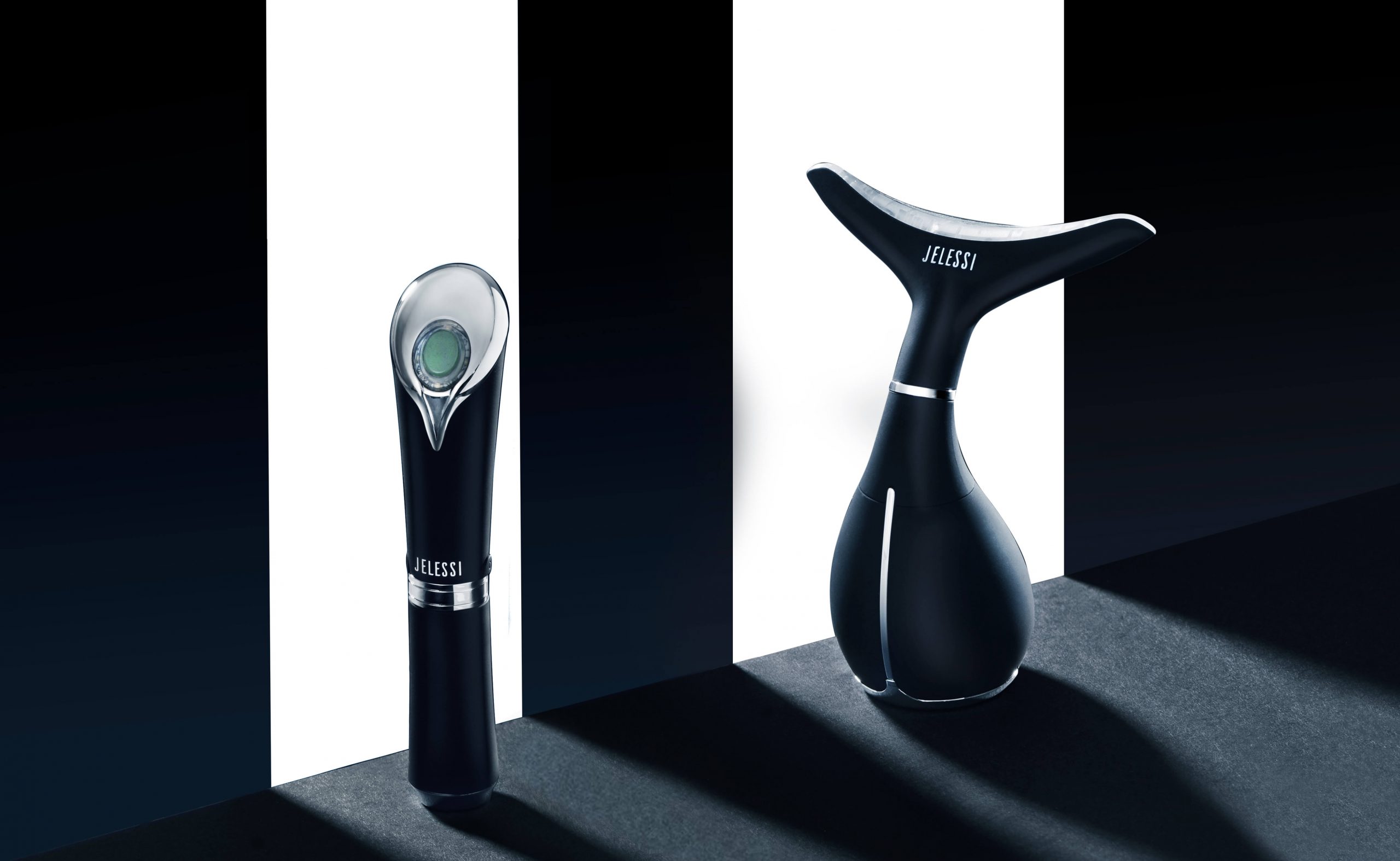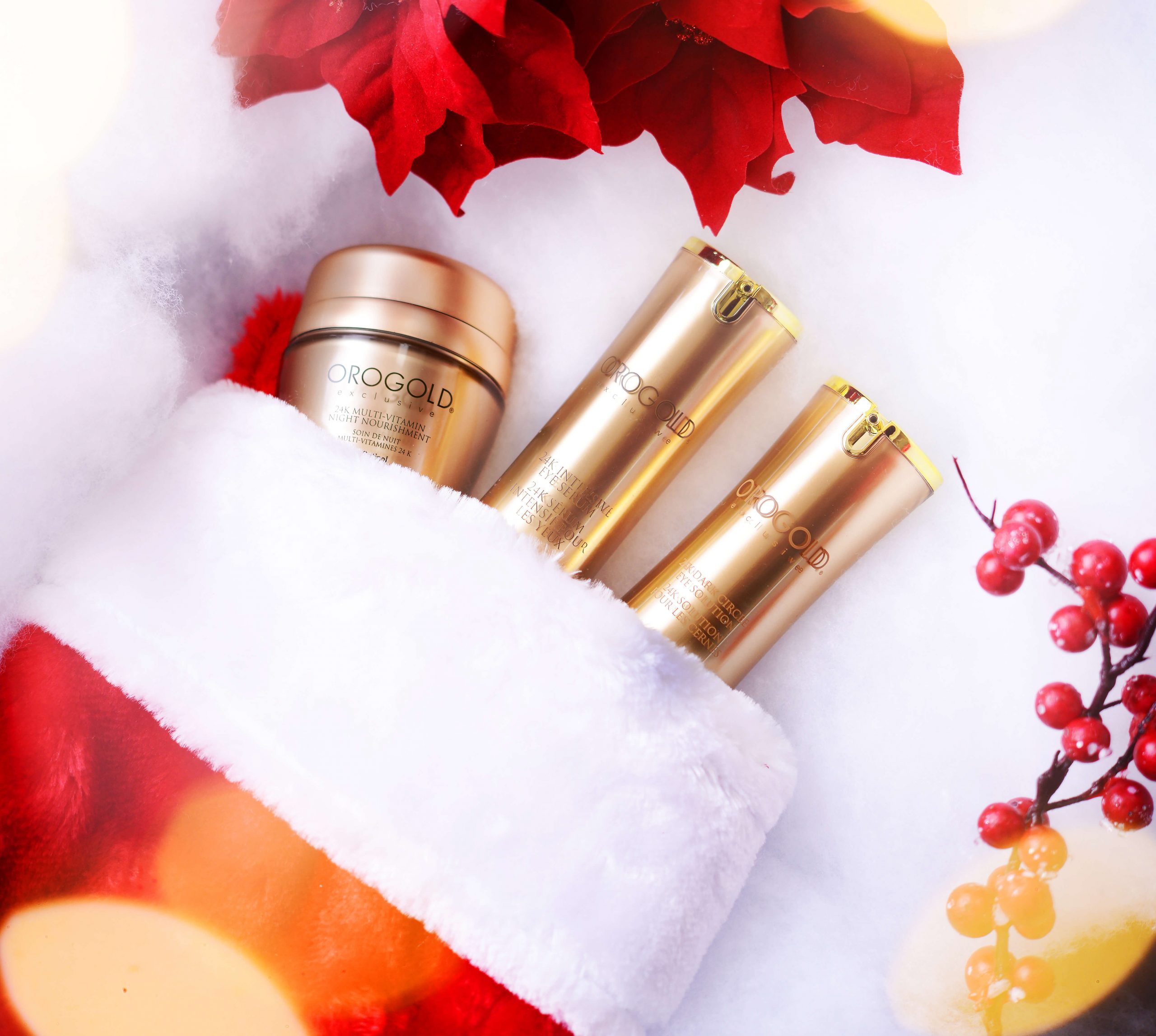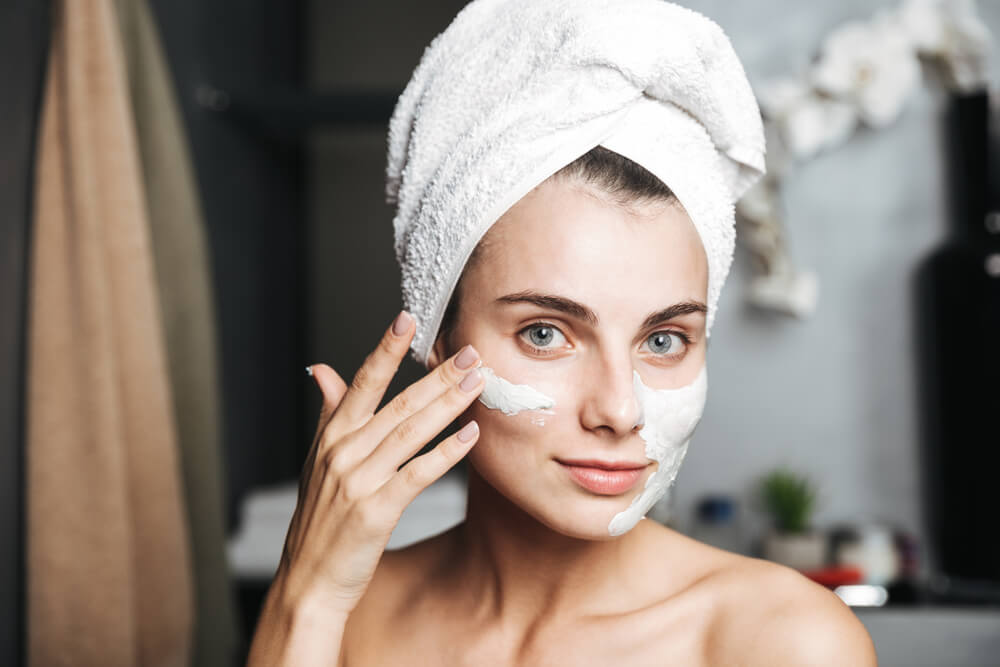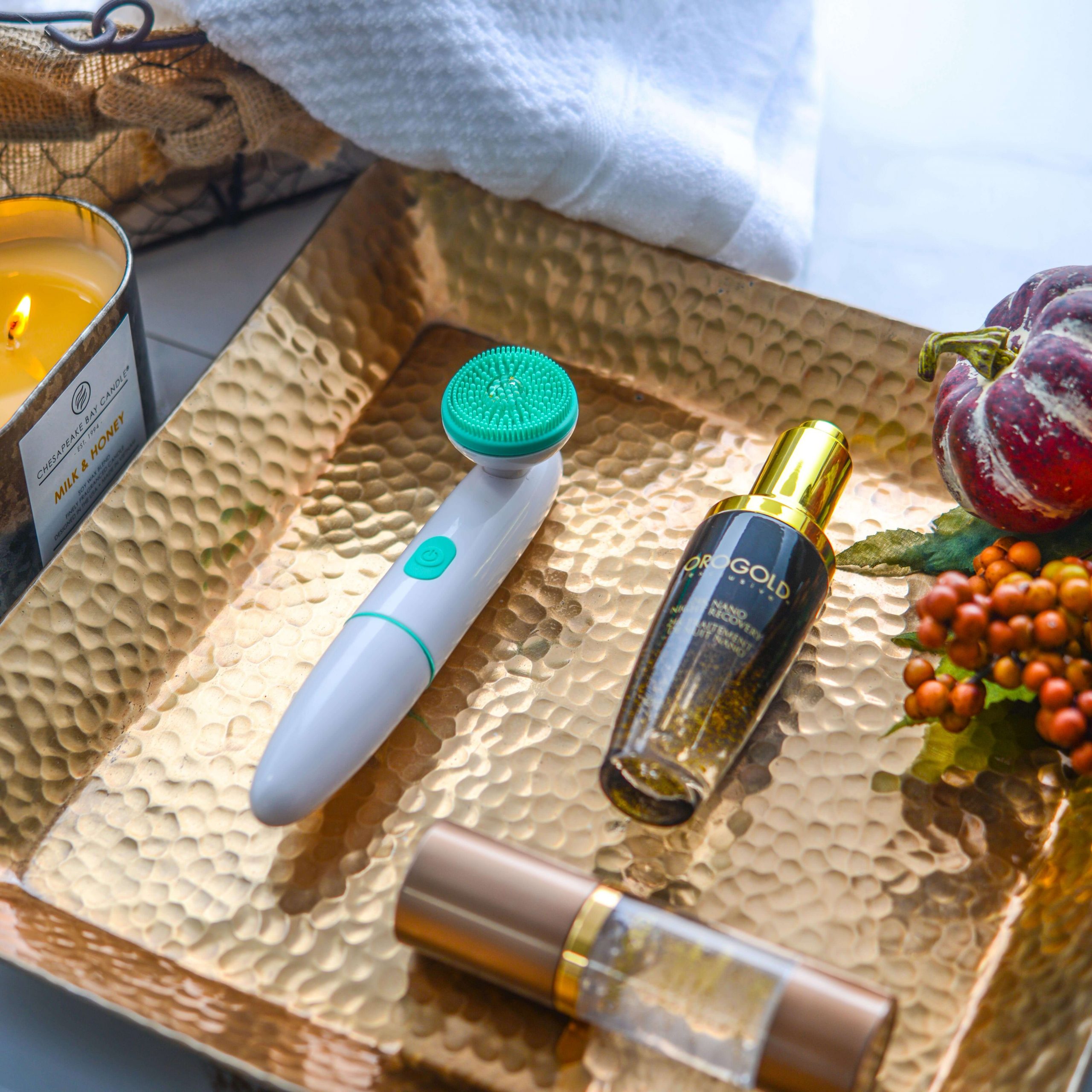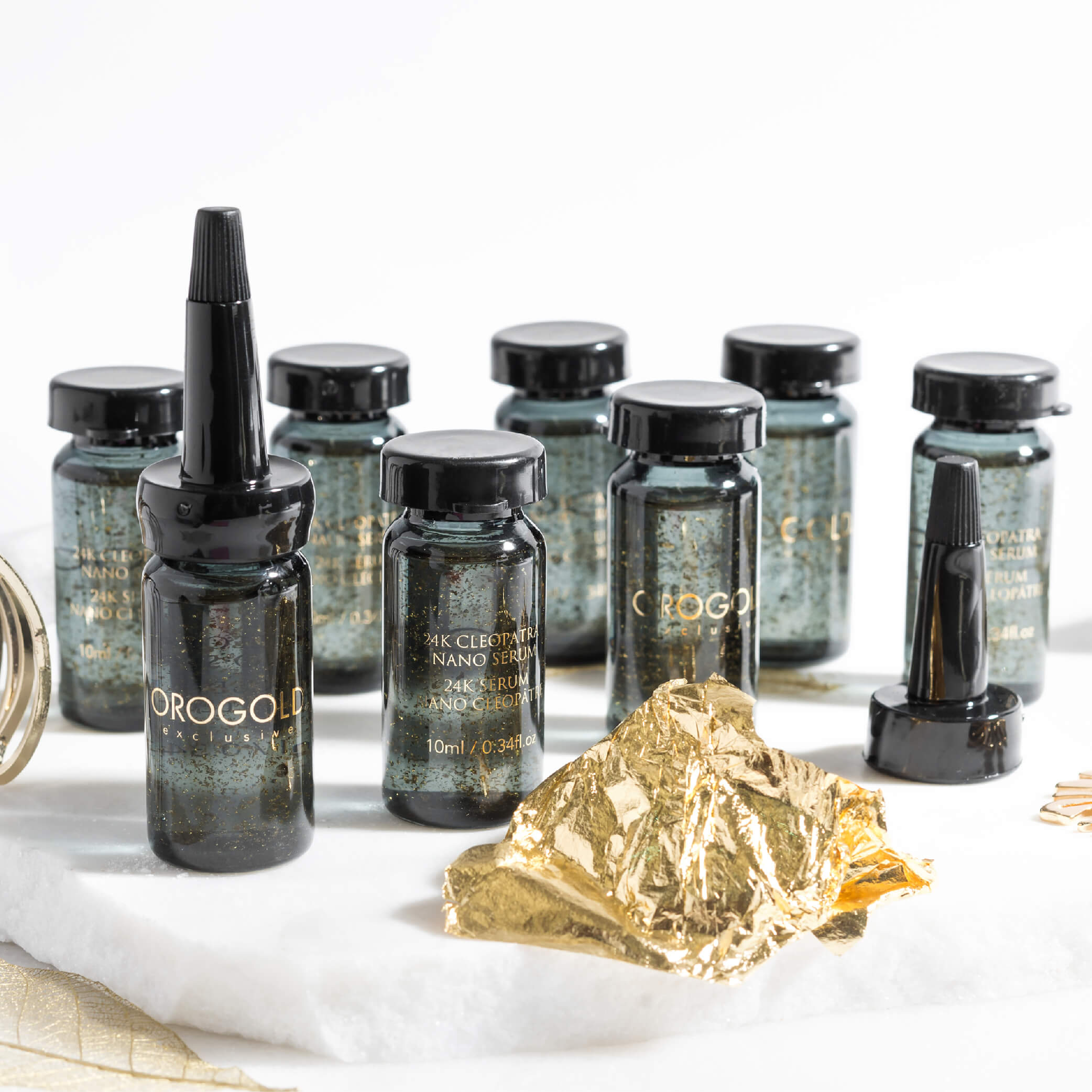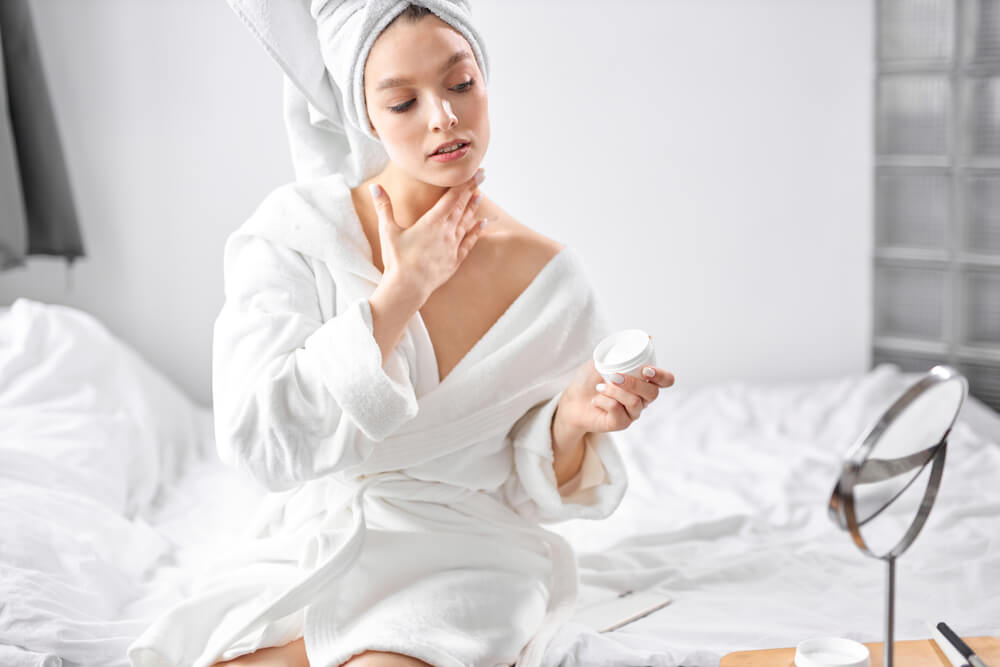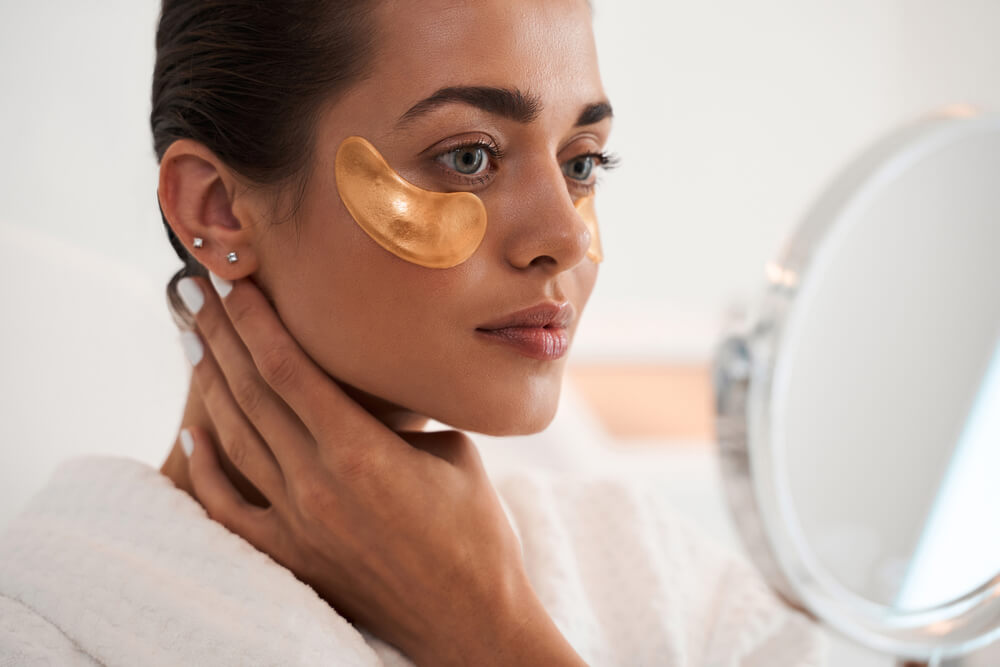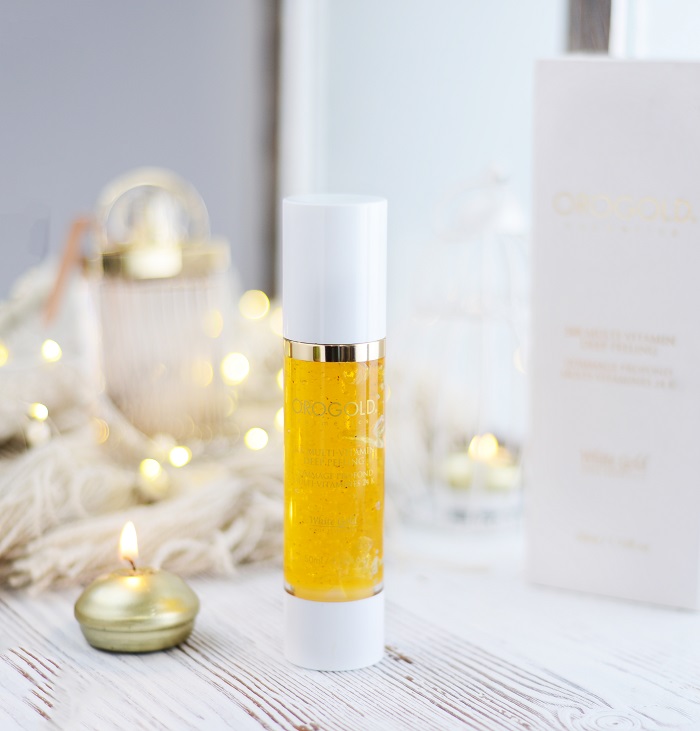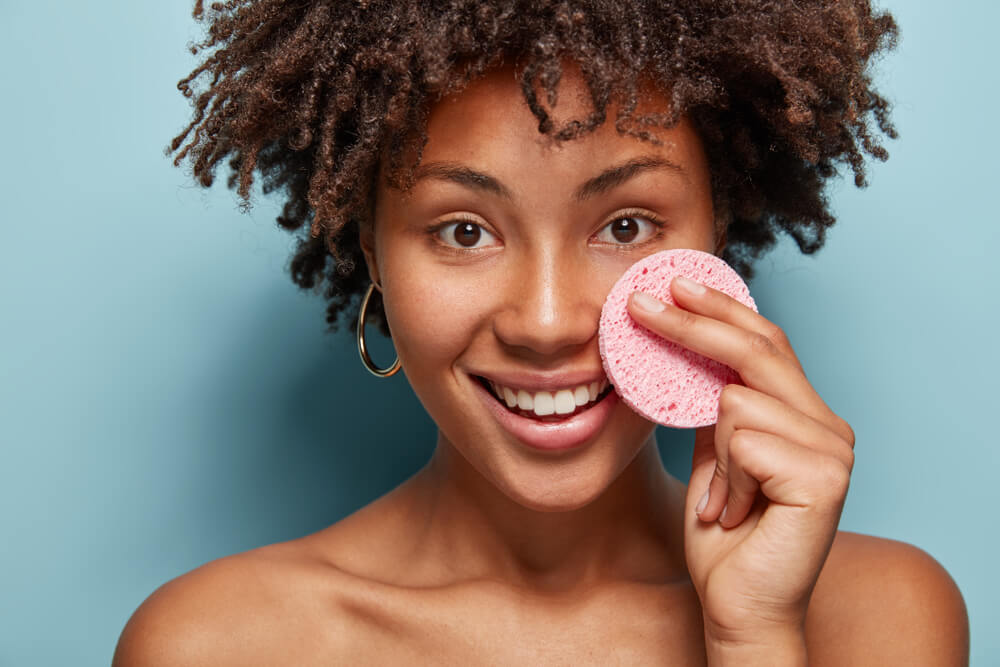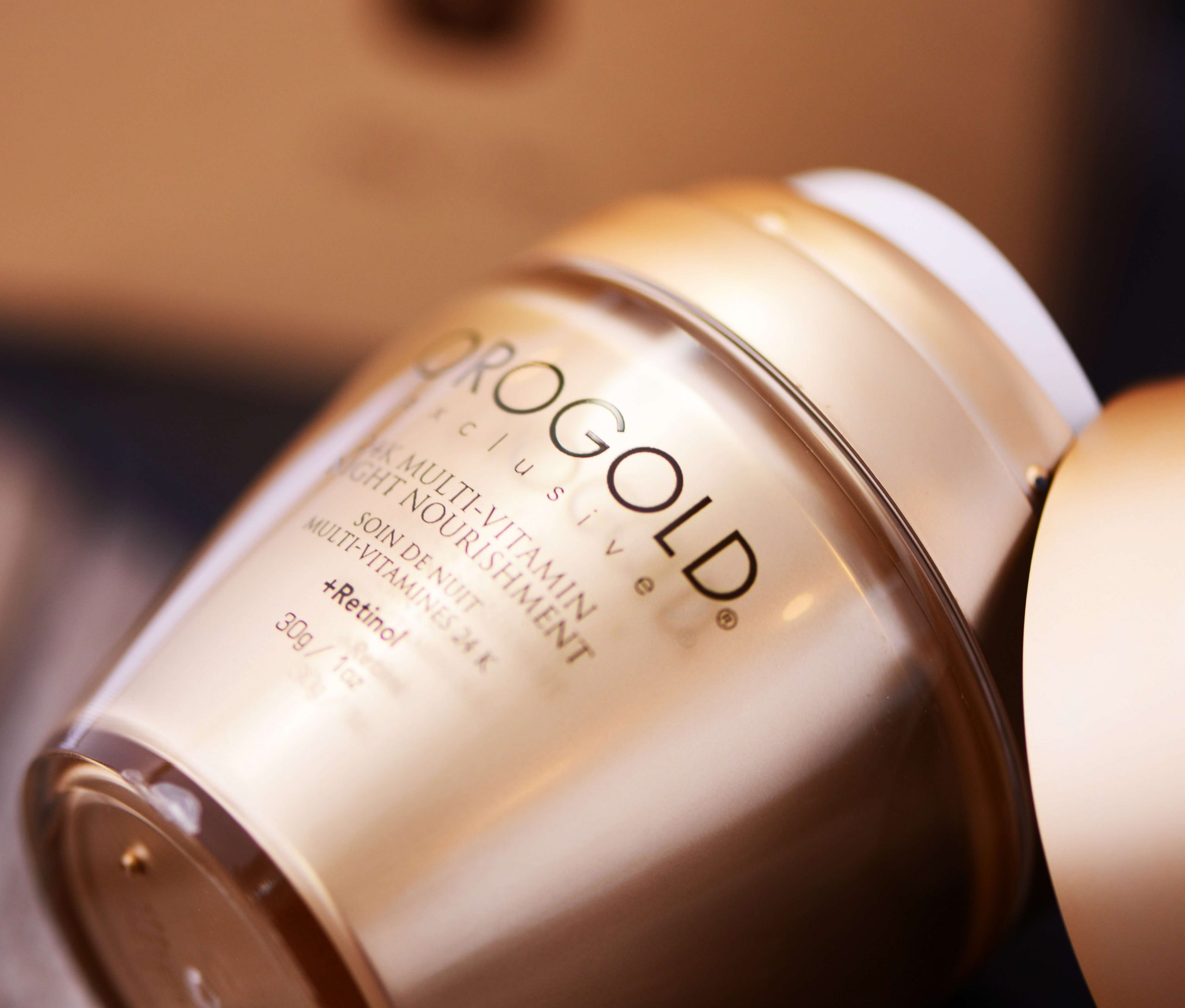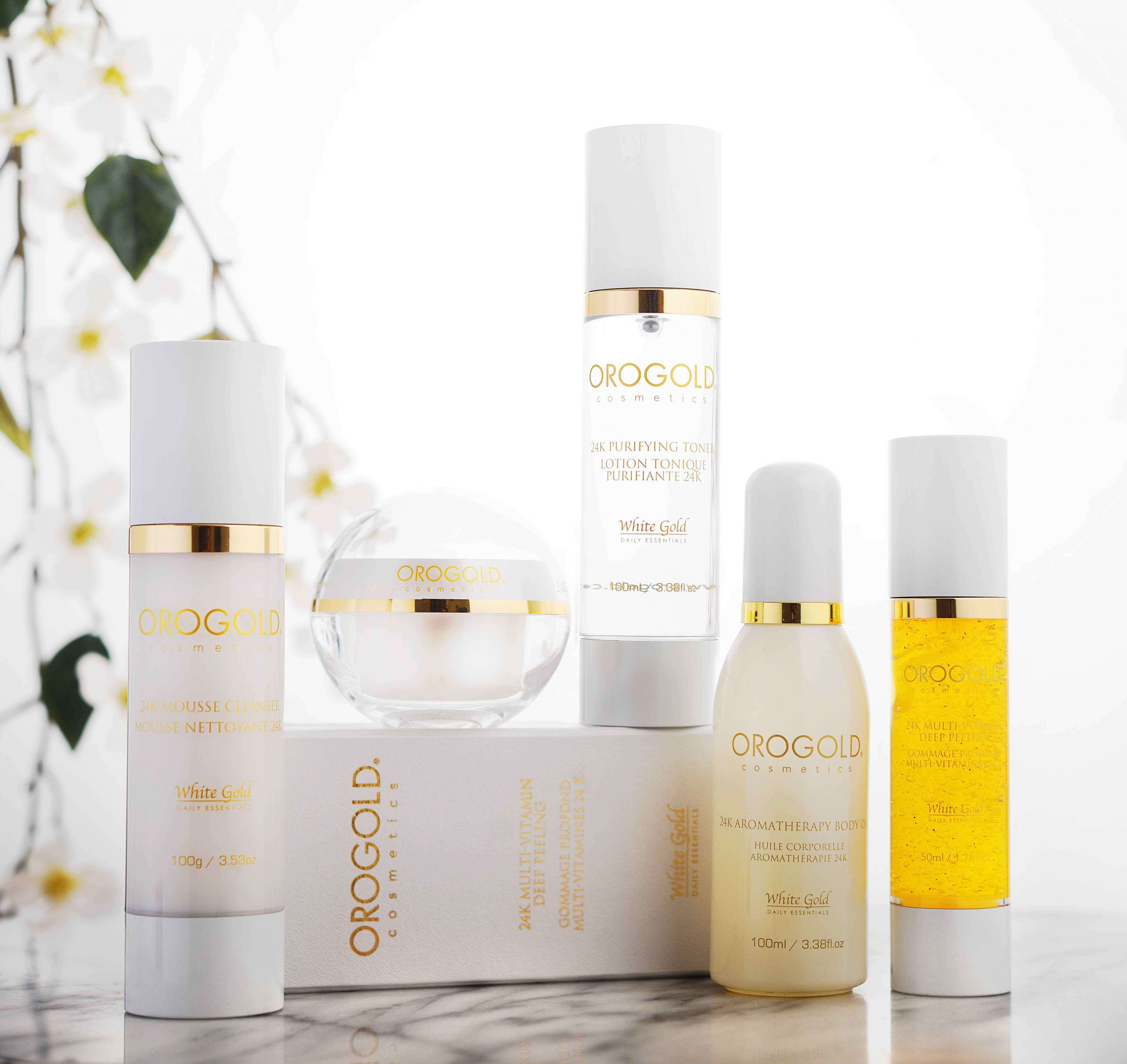
Using the right lip care techniques to achieve a perfect-looking pout is the latest goal in the realm of beauty. However, it can be difficult to navigate how, exactly, to attain gorgeous lips. After all, seasonal changes, temperature and humidity fluctuations, various environmental factors, and certain behaviors can all impact the health and appearance of our lips.
Rest assured that at OROGOLD, we know just what your lips need. Today, we’re sharing our best tips on how to care for your lips. We’ll also be recommending some lip care products you’ll no doubt want to snag today!
Keep Your Lips Moisturized with a Hydrating Balm
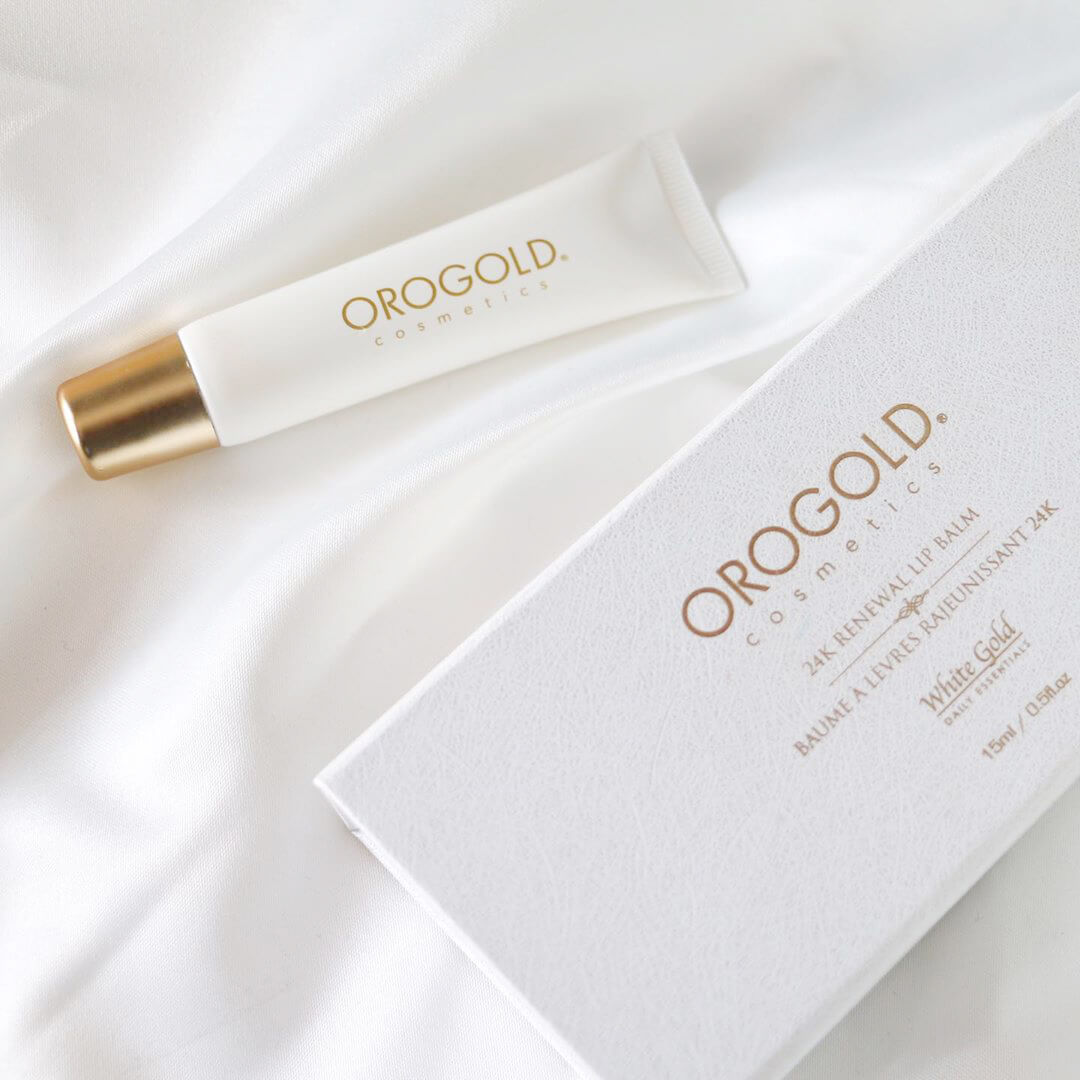
If you’re ready to tackle your lip care goals head-on but are starting off with lips that feel dry or chapped, you’ll want to prioritize moisturizing your lips. How? With a moisturizing lip balm. That said, there are many different ways to tackle these unfortunate symptoms. But, first and foremost, you want to focus on using hydrating products to help your lips hold onto moisture. And a balm is perfect for this.
Just as the rest of you becomes dry and dehydrated during dry, colder weather, so do your lips. Your lips don’t have any oil glands to help them hold onto their moisture. This lack of oil glands means your lips are much more prone to dryness than other parts of your body.
Lip balms that contain high-quality ingredients can feel ultra restorative for dehydrated lips. At OROGOLD, we recommend keeping a hydrating balm with you at all times. Apply your lip balm as necessary for soothing lip comfort. It should also be a proactive step to avoid the loss of necessary moisture whenever your lips feel parched.
The Ultimate Lip Care Product: The 24K Renewal Lip Balm
For this important job, we recommend our 24k Renewal Lip Balm. A soothing balm for your lips, we’ve developed this product with care to provide your lips with a more softened and moistened appearance whenever you use it. Our 24k Renewal Lip Balm is infused with botanical oils, along with minerals, and vitamins. These include:
- Gold
- Shea Butter
- Avocado Oil
- Vitamins C and E.
The Vitamin E in our 24k Renewal Lip Balm is the star ingredient to look for in effective moisturizing lip care products. Vitamin E has numerous benefits for lip care and achieving an enviable pout.
Regularly Exfoliate Your Lips
When it comes to lip care, a crucial step toward achieving the ultimate enviable pout is the process of exfoliation on and around your lips. Exfoliating is the key to maintaining balanced, healthy-looking skin and lips. The process of exfoliation removes dry, dull, and dead skin cells. Exfoliation also clears your pores of the build-up of dirt, debris, sweat, oil, and old makeup.
The key to achieving the perfect pout through the process of exfoliation is to know how often you should exfoliate. Most skincare experts suggest exfoliating two to three times per week on a regular basis. Ideally, you should exfoliate immediately after cleansing your skin and lips. When you exfoliate regularly on this schedule, your lips will benefit from the powerful ingredients packed in your exfoliating product.
How to Exfoliate Your Lips
For this important step of your lip care routine, we recommend our 24K Multi-Vitamin Deep Peeling. It’s a truly unique exfoliating gel that we’ve specially formulated with a plethora of effective ingredients, including Mandelic Acid, brightening Vitamin C, and Bamboo Stem Powder. This gel-like formula is non-abrasive and yet highly effective at removing stubborn dead skin and buildup that may be accumulating on your skin and lips. As a result, you’ll be able to reveal the gorgeousness beneath.
Use our 24K Multi-Vitamin Deep Peeling to gently polish your lips and the surrounding skin. It’s an elixir that will leave your skin and lips looking luminous and thoroughly restored as part of your lip care routine.
Avoid Irritating Ingredients in Lip Care and Makeup Products

When pursuing that healthy pout, it can be confusing to know which ingredients are safe for your lips and which ingredients can cause irritation, inflammation, and damage. As a general rule for lip care, it’s best to avoid balms that contain Menthol, Camphor, Eucalyptus, Octinoxate or Oxybenzone, and Parabens.
One way to ensure that you are avoiding harmful ingredients on your lips is to avoid products that cause burning or stinging after they’re applied. Many think these symptoms are a sign that their lip care products are working. However, discomfort is never a sign of a quality lip product. Instead, it’s a sign that the ingredients in the product are irritating your lips. This means that they could be causing more harm than good.
Our 24K Renewal Lip Balm is free from irritants and inflammatory ingredients. In fact, it’s infused with our star soothing ingredient – 24k Gold. Your lips will look healthier than ever!
Stop Licking Your Lips
We’ve all been there. Our lips get dry and feel chapped and the temptation to lick them and give them some moisture is strong. But as part of your new lip care regimen, it’s an absolute must that you stop licking your lips!
It may surprise you to know that the act of licking your lips is actually counterproductive. While licking your lips briefly makes them feel more hydrated and moistened, by the time the saliva evaporates, which happens fast, our lips are actually left drier. This cycle can become a bad one, increasingly drying the lip area to the point of pain. Licking your lips can actually cause other problems as well. Persistent licking can result in an increase of chapping, flaky skin on the lips, peeling skin, and splitting, cracking skin. Not only can these symptoms be extremely uncomfortable, but they can also wreak havoc on the appearance as well!
Whenever the temptation to lip your lips is strong, we recommend not only nixing your bad habit but using our 24K Renewal Lip Balm as often as necessary as well! Consistent use of our lip balm will keep that pucker feeling fully moisturized and free you from the temptation to lick your lips.
Use a Rich Cream Around Your Lips to Prevent Lip Lines

Another important step to prepare your lips to rock an enviable pout is to use a rich cream around your lips. This will prevent the appearance of lip lines from forming.
The product you’ll want to have in your lip care arsenal to prevent the appearance of lip lines is our 24K Multi-Vitamin Day Moisturizer + Amino Acid. Our special day moisturizer is a multi-tasking cream that feels smooth and non-greasy when applied.
Packing a combination of well researched natural and synthetic ingredients, including Vitamins A, C, and E along with Shea Butter, Organic Chamomile, and our signature cosmetic Gold, our 24K Multi-Vitamin Day Moisturizer + Amino Acid is a product that will help to give your skin a smoother and softer appearance.
Stay Hydrated From Within
When it comes to your lips, maintaining a healthy level of hydration from within is absolutely paramount. Water affects the hydration levels in each and every part of our bodies. If we’re not drinking enough water, we are producing less saliva. This makes our lips look and feel parched, dry, and dehydrated.
The recommended amount of water we should be consuming for optimal luscious lips is six to eight glasses per day. If it’s hard to remember to get your glasses in on a daily basis, try drinking two glasses before each meal.
To stay hydrated from within, you’ll also want to avoid drinking an excess of caffeine. Caffeine acts as a diuretic and will flush the hydrating fluid from your body. This can lead to signs of dehydration throughout your body, including in your lips.
While drinking plenty of water is the best way to stay hydrated from within, you can also sleep near a humidifier to maintain moist and hydrated lips. If the air in your home lacks humidity or the weather is cold and you are pumping a lot of heat into your home, the healthy moisture in your skin, and lips, will evaporate. A humidifier helps to counteract the impact that dry air and seasonal weather changes can have on your lips. It’ll help your lips stay supple and moist.
Use an LED Device to Plump Up the Look of Your Lips

If you’ve been following the popular trends in skin and lip care, you’ve likely heard of LED light therapy as a treatment for a variety of skincare concerns. Providing non-abrasive, targeted improvements to the appearance of your skin and lips, LED light therapy is backed by innovative research. Use of LED light therapy is proven to improve the appearance of your skin and lips in many ways including reducing the appearance of both fine lines and wrinkles, boosting the look of radiance, and more.
At OROGOLD, we’ve harnessed the power of LED light therapy technology and developed handheld devices for home use. That’s right, you can now take your lip routine to the next level and plump the appearance of your pout from the comfort of your own home.
While we don’t have an LED device specifically for the lips, look into the Photonix-2 Jade Eye Wand. Set the device onto its anti-aging mode and then use it on your lips. It’ll give your pucker a smoother and plumper finish.
Conclusion
It’s surprisingly easy to achieve a perfect-looking pout. Simply follow the lip care tips above and include the products we’ve discussed as part of your lip care routine. For more gold-infused skincare formulas, check out the OROGOLD bestsellers here.




 A.U.
A.U. B.R.
B.R. C.A.
C.A. E.S.
E.S. H.K.
H.K. M.X.
M.X. N.L.
N.L. P.R.
P.R. S.G.
S.G. T.W.
T.W. U.K.
U.K. S.A.
S.A.



